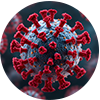
Antibiotics and chemotherapeutics are drugs that are used to treat bacterial infections, and they differ in both chemical structure and use. For that reason, other information about the method of use and other restrictions is available to the patient at the time of dispensing.
Some antibiotics have a so-called photosensitizing potential – the skin becomes more sensitive to light (especially to ultraviolet radiation) and an intensified skin reaction may occur.
Antibiotics and chemotherapy drugs that can cause photosensitivity reactions include:
It is therefore appropriate to:
The skin's reaction to sunlight can manifest as:
Undesirable photosensitive effects of antibiotics can be mitigated by cooling the skin (cold compresses, soothing body lotion...) or by administering anti-allergy drugs. More serious skin reactions should be assessed by a doctor.
Free according to the web portal of the Czech Chamber of Pharmacy for the public Lékárnické kapky, 30/08/2023

30. 11. 2025
The pitfalls of mail order dispensingAt the recent XXXIVth congress of delegates of the Czech Chamber of Pharmacists, the discussion about the possibility of introducing mail order dispensing was reopened ...

31. 10. 2025
Hepatitis A (viral hepatitis A) is an infectious inflammatory liver disease caused by the hepatitis A virus. It is transmitted by the fecal-oral route either by ...